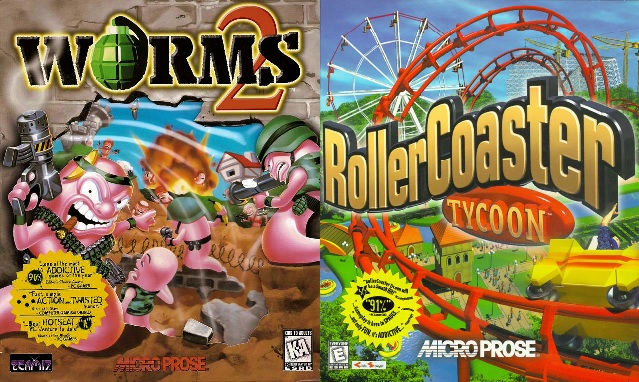Going Second to Float for Silver Medals
- baronsfel001
- Oct 6, 2021
- 6 min read

Ever since booming onto the 6th generation of consoles every primary Sonic game experimented with new ideas that would not only help enrich the franchise (or not help, depending on who gets asked) but allow each title to stand unique on its own. Sonic Adventure showed how the wait from the tiny taste of 3D Sonic found in the compilation Sonic Jam for Sega Saturn was well worth it, not only bringing the classic Sonic gameplay to the new dimension but adding new characters with new gameplay elements developed to take advantage of them. Sonic Adventure 2, a sequel in name only, actually eliminated the adventuring aspect but in its place came a new fruition of the Saturn-era Sonic Team idea of multiple missions per stage, side quests, and ranking via score attack that continues to add replay value to the series today.
The first two Sonic Adventure games were such big hits with the community that among the biggest wonders was why they only released for Sega Dreamcast then got ported with minor enhancements to Nintendo Gamecube. The inferior (though still very much playable) PC version of Sonic Adventure DX notwithstanding, neither of the two games that defined Sonic's mainstream 3D debut would see any other developer's platform for the better part of a decade when the digital re-release medium became viable enough to include them. This is worth mentioning because developmental "politics" within Sega were very interesting in their early days after Dreamcast was discontinued and they began producing for everyone else's systems, but the answer to this question is the fact that Sonic Team at the time was tied to Nintendo development, an issue that would arise again in later years.
Sonic Heroes brought team-based play and character upgrades in a big 3D rehash of the classic zones with 2 acts each as well as getting Chaos Emeralds via Special Stages. Heroes was designed as the first original Sonic title for Gamecube, but those internal politics mentioned last paragraph instead made it the first Sonic game to go full multiplatform; while the Playstation 2 and Xbox ports varied slightly from the Gamecube original in quality and features, all 3 (as well as a PC port) made Sonic Heroes the best-selling Sonic game to date. Follow-on game Shadow the Hedgehog (some consider it a spinoff but this author does not as it and wraps up vital story elements from both Sonic Adventure 2 and Sonic Heroes) was a solo act for the title character that brought in the infamous wielding of weapons but otherwise played very similar to Sonic Heroes as it used the same engine and was available for the same platforms.
And that brings us to Sonic the Hedgehog, the first game in the series to benefit from the Havoc physics engine thus a new character and gameplay elements were created for it. The author having recently finished Silver's episode with all gold medals prompts review of that almost-third of the game. While Shadow is listed before Silver in the menus, Silver is the first of the two Sonic encounters in his episode and provides the whole story background which is necessary to make best sense of Shadow's episode.
First in terms of story, Sonic's nemesis is Eggman whom he takes on with his usual free-spirited sense of adventure, this time with the added bonus of being brought down to former rival Mario's level of female royalty rescue. Silver, on the other hand, is a staunch pragmatist from having grown up in and charged with protecting what little is left of a world that is literally a living hell, who then leaps at the opportunity to save it for good even if that chance may have been presented to him via manipulation. His nemesis is Iblis (an Arabic nickname for the devil who certainly looks the part in this game) who, unknown to Silver at first, is merely the senseless, destructive half of the malignant godlike entity all the characters end up facing in the end.
Silver's is definitely the most interesting team in this game. Amy Rose pretty much gets recruited by accident and, while her gameplay turns out to be among the briefest, it is that story element that gets her to stand out. Even more fascinating is Blaze the Cat because, in light of 2004's Sonic Rush which had introduced her, her inclusion as a friend of Silver's from his distant future as well as her apparent lack of recognizing Sonic begs some speculation. Even accounting for events of the whole game being erased from the timeline in the Last Story, when that occurs Blaze is absent having already been imbued as the new vessel of Iblis and banished to a different dimension. Even with her profile in the manual for Sonic the Hedgehog identifying her as guardian of the Sol Emeralds, in this author's assessment everything comes together (including the powers Blaze exhibits in the Rush games) if the following is considered: 1) what happened at the end of Silver's chapter is not erased in Blaze's case because she has transcended dimensions (and space-time along with it); 2) Blaze's fire affinity is what made her a compatible vessel for Iblis in the first place, the future Iblis sealed within Blaze becomes the only surviving part of Solaris as a result of their banishment, and it is conceivable that the two develop a symbiotic (if antagonistic) relationship that enables her to enhance her own fire abilities with those of Iblis; 3) the place and point Blaze and Iblis got sent to is the dimension where the Sonic Rush games are set at some point beforehand; 4) the new introduction between Sonic and Blaze in Rush can still make sense since the two did not interact directly in Sonic the Hedgehog and there is no telling what effect the strain of keeping Iblis contained may have on Blaze.
This will not be the last time this author speculates on how Sonic story canon ties together, but the most vital part of a game review involves the gameplay. Silver's Havoc-based telekinesis, while only so well-received and therefore not repeated in the series since, appears to accomplish exactly what it set out to do. Like Big the Cat's fishing in Sonic Adventure it is a very non-Sonic style, but this one fits the setting much better. Slower characters mean more generous time bonuses which means, in general, Silver's chapter was easier to get those medals in than Sonic's more speed-based ranking. Of course it has its challenging parts (particularly the boss fights), but if it were too easy it would be even less worth playing.
It takes a while to get accustomed to but once that point is reached the telekinetic combat can be quite fun. With Sonic's dashing through stages now replaced with trudging through waves of enemies at least there always seems to be a generous supply of ammunition. Upgrades are necessary to take advantage (though that does not take long into the game), but there is something deeply satisfying about grabbing enemy projectiles, launching them back at the attacker, then using extra missiles grabbed in the process to annihilate the attacker's partners without them realizing something has gone wrong. This is as close as Silver gets to picking up and wielding weapons for himself, though the combat is still more direct (that is, not as standoffish) in general than that of Shadow the Hedgehog.
Still, despite Silver's plethora of abilities including his hovering, the level design went in a direction that leaves at least as many parts as Sonic's chapter for which, even if the right idea is plain enough, it is still too easy to slip up and have to start the stage over. The slower gameplay does at least mean Silver is far less susceptible to being offed by glitches than Sonic. Because aiming is a vital to making telekinetic attacks count proper camera manipulation is a must.
Playing Shadow's chapter is next and in that regard this author believes the best has been saved for last, being one of those [apparently in the minority] who thoroughly-enjoyed Shadow the Hedgehog and has taken notice that some of the elements introduced in that game were carried over to this one. Shadow has kept his word of putting the past behind him and, not sharing Sonic's free spirit, has opted to put his abilities to good use partnering with Rouge the Bat as a government agent. When the President of the United Federation needs Eggman's plans checked he now has the best Ultimate Life Form for the job...





Comments